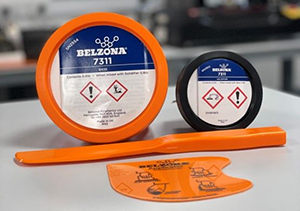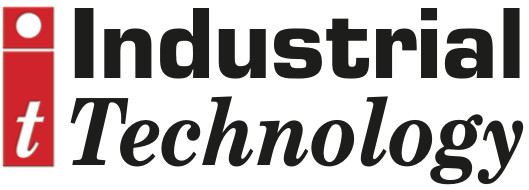
Posted to News on 25th Nov 2021, 00:00
Belzona adds first epoxy structural adhesive to its polymeric portfolio
Belzona has expanded its product offering with a new high-performance structural epoxy adhesive, Belzona 7311. This cold bonding adhesive has been optimised for structural bonding applications subject to cyclic and repeated load where high mechanical strength, cleavage, shear and fatigue resistance are required.

Belzona says the new 7311 takes its cold bonding technology to the next level. Belzona cold bonding technology has already been utilised in numerous application areas for decades. Although these systems provide effective bonding solutions, they are designed to be used across a wide range of application areas and therefore are not exclusively optimised for use as structural adhesives.
Given the clear demand for cold bonding solutions across a variety of application areas, the need for a polymeric solution that was exclusively designed for structural bonding applications emerged.
Commenting on the formulation process of the new product, one of the main developers behind Belzona 7311, R&D manager Jason Horn said: “Thanks to our historic success with Belzona systems in thousands of bonding applications over the years, we had access to a wealth of knowledge and experience when formulating our brand-new structural adhesive.
“Building on this knowledge, we were able to really push the boundaries of what can be achieved with Belzona cold bonding technology. The result is a high-performance product that is perfectly formulated to meet the exact structural bonding requirements found across a wide variety of application and industry areas.”
Benefits of Belzona 7311 are said to include: high resistance to cyclic fatigue and peel/cleavage forces; excellent adhesion to metallic substrates; suitabiliyy for dry or wet service between -30 °C (-22 °F) and 60 °C (140 °F); cold-curing, solvent free material keeps application environment safe; and easy to mix and apply without specialist tools
Belzona says cold bonding with the new structural adhesive is viable alternative to welding and mechanical fastenings/fixings. While welding is a common bonding method used throughout many industries, it is not without its limitations. The welding procedure transmits the applied loads throughout the weld seams only, requires hot work permits and specialised equipment, it is not optimal for dissimilar metals, and it can often be difficult to install with complex shapes or where accessibility is poor. In addition, the heat generated by welding can result in heat affected zones and stressing of the welds unless heat treated, which can lead to increased corrosion.
Similarly, while mechanical fastenings or fixings are also popular jointing/assembly solutions, in some areas, these methods can prove to be problematic. For example, they can be susceptible to point loading, uneven stress distribution, metal distortion and tearing under heavy loads and, due to fatigue, can experience a loss of reliability, longevity, gapping or even failure. Also, like welding, these jointing/assembly methods can leave the application sites prone to corrosion and are often difficult to install in complex shapes.
All these problems can lead to increased downtime, asset replacement and increased financial expenditure.
Thanks to the comprehensive matrix of high-performance properties built into Belzona 7311, the company says this epoxy structural toughened adhesive successfully bypasses these problems in a number of ways:
- Adhesive applied to cover the entire joint, resulting in uniform stress distribution and load transmission, reducing metal distortion under strain
- Good damping properties give high toughness and fatigue resistance
- Can accommodate complex shapes and be installed where accessibility is poor
- Minimal training required for application procedure
- No hot work or specialist equipment required
- Does not promote corrosion
- Lightweight and easy to apply, reducing costs and labour






